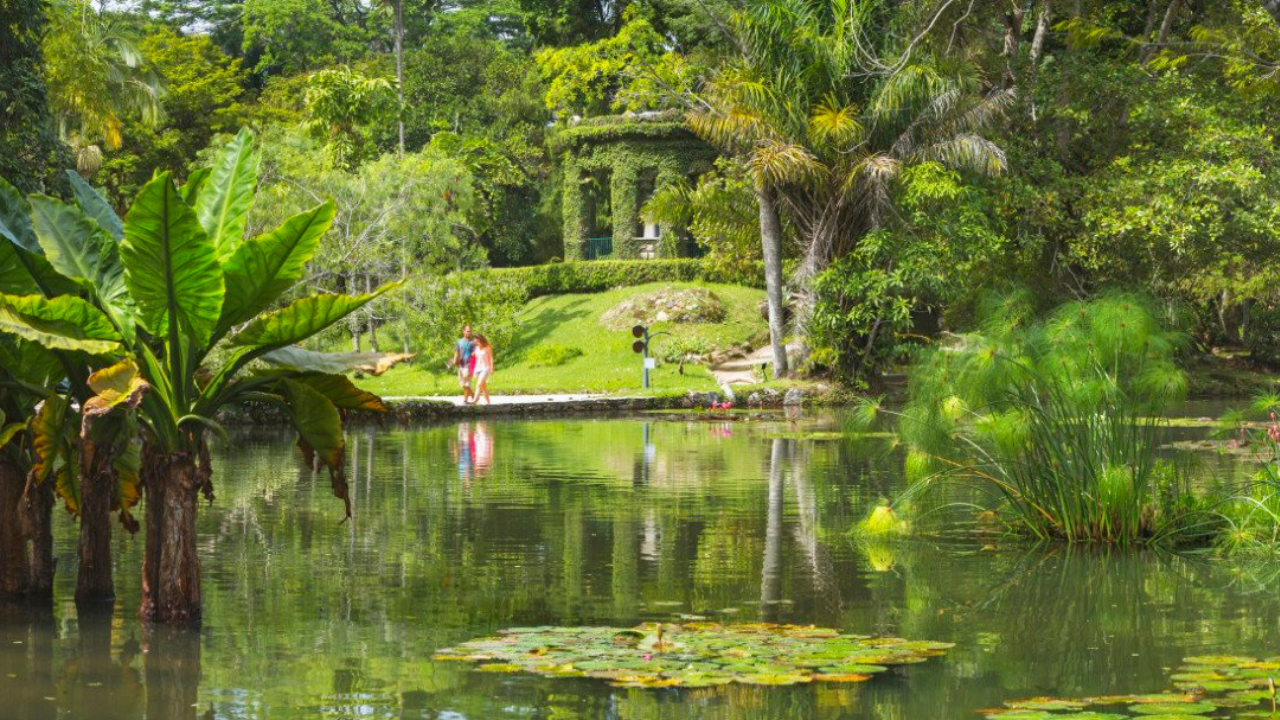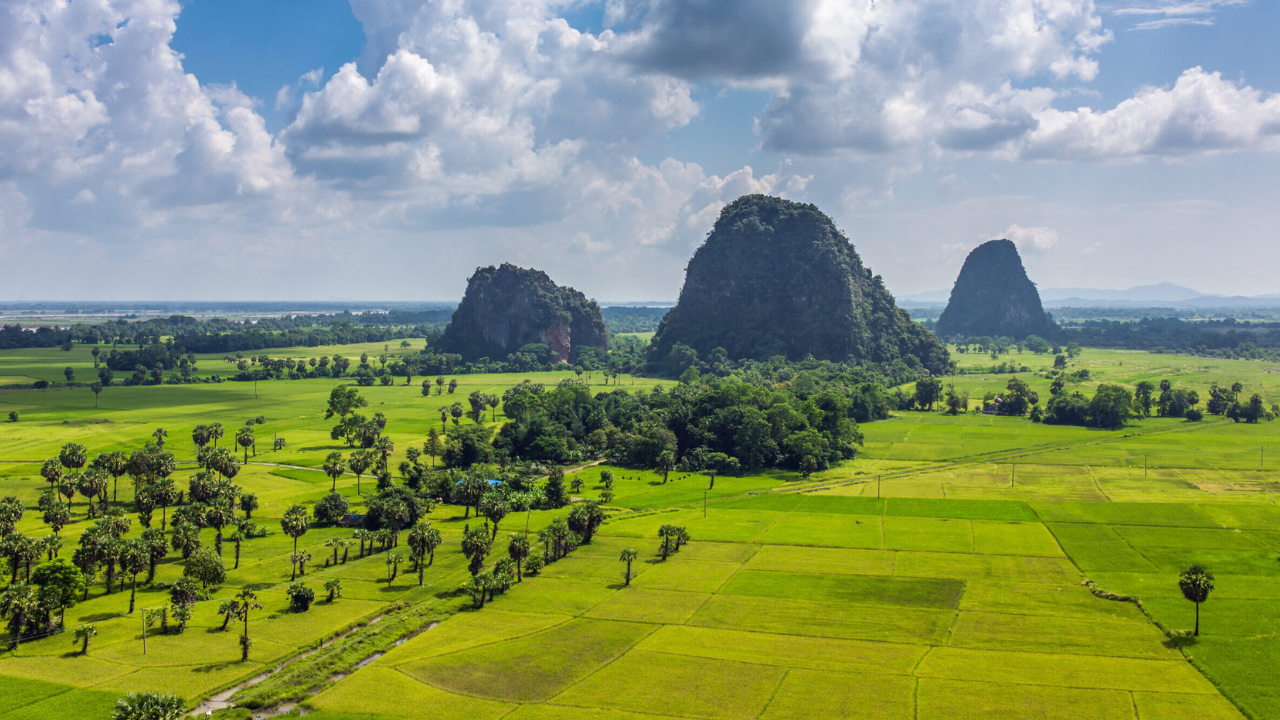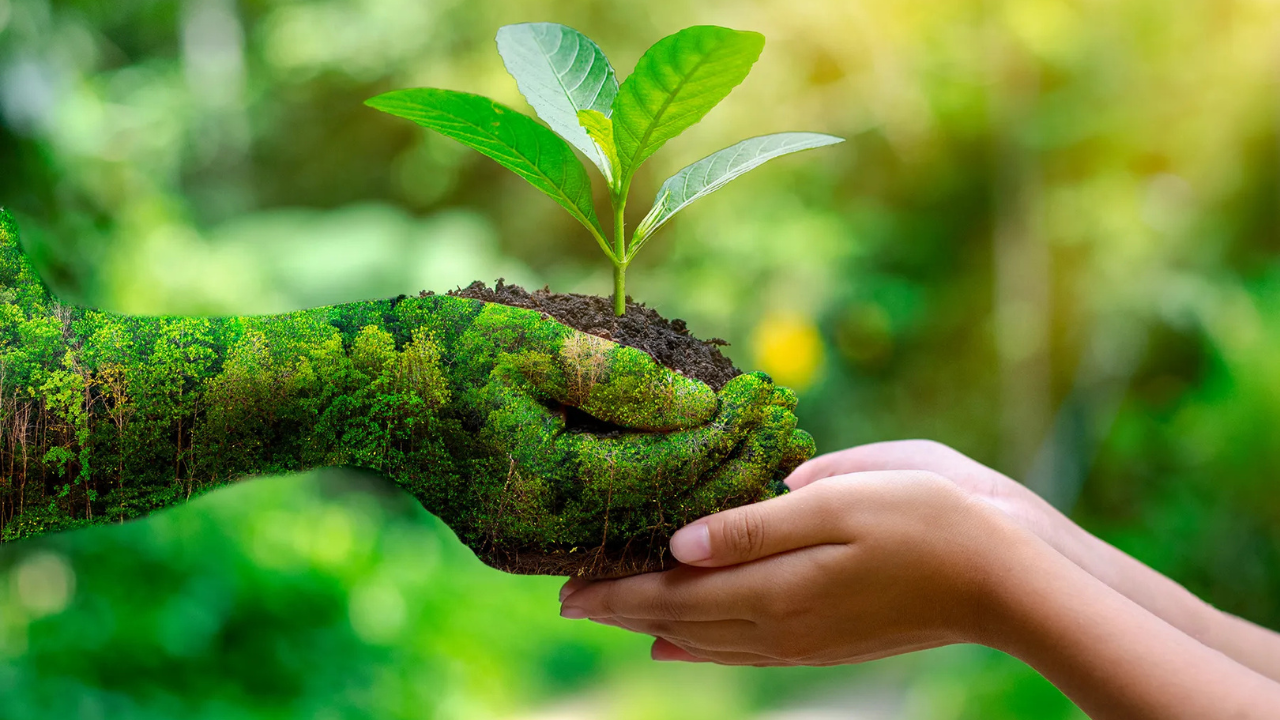
The Return of REDD+ Signals Good News from Bonn: A Renewed Hope for Forest Conservation
On this March 29, 2025, as spring unfurls its green tendrils across the Northern Hemisphere, a different kind of renewal is stirring in the realm of global climate policy. From Bonn, Germany—the hub of international climate negotiations—comes a promising update: the return of REDD+, the United Nations’ framework for Reducing Emissions from Deforestation and Forest Degradation. After years of wavering prominence, REDD+ is reclaiming its spotlight, signaling good news for forest conservationists, indigenous communities, and anyone invested in a sustainable future. This resurgence, rooted in recent talks at the UNFCCC’s intersessional meetings, offers a lifeline to the world’s forests and a tangible step toward meeting climate goals. In this article, we’ll unpack REDD+’s revival, its implications for forest ecosystems, and why this moment in Bonn marks a turning point for global conservation efforts.
REDD+: A Brief Recap
REDD+—an acronym that stands for Reducing Emissions from Deforestation and Forest Degradation, plus the conservation, sustainable management of forests, and enhancement of forest carbon stocks—emerged in 2005 as a cornerstone of climate mitigation. Its premise is simple yet profound: incentivize developing countries to protect their forests, which act as carbon sinks, by providing financial rewards for verifiable reductions in deforestation-related emissions. Forests absorb vast amounts of CO2—over 7.6 billion metric tons annually, per a 2024 Global Forest Watch report—making their preservation a linchpin in the fight against climate change.
The “+” in REDD+ broadens its scope beyond mere emissions cuts, emphasizing co-benefits like biodiversity protection, poverty alleviation, and ecosystem resilience. Since its adoption under the Paris Agreement in 2015, REDD+ has spurred projects from the Amazon to Indonesia, channeling billions in funding from developed nations to forest-rich regions. Yet, its journey has been rocky—marred by funding gaps, implementation challenges, and debates over carbon accounting. By 2020, enthusiasm had waned, with critics pointing to inconsistent results and bureaucratic hurdles. Bonn’s 2025 talks, however, signal a revival, breathing new life into this vital mechanism.
What Happened in Bonn?
The UNFCCC’s intersessional meetings in Bonn, held annually between the larger Conference of the Parties (COP), are where negotiators fine-tune climate strategies. In March 2025, REDD+ re-emerged as a focal point, driven by a coalition of rainforest nations, conservation groups, and supportive developed countries. The catalyst? A renewed draft text, unveiled on March 25, explicitly reinstated REDD+ as a priority for climate finance and action, reversing its omission from earlier frameworks—a move that had alarmed advocates a decade ago.
This shift wasn’t spontaneous. It followed years of advocacy, notably from the Coalition for Rainforest Nations, which argued that sidelining REDD+ ignored forests’ outsized role in climate stability. The Bonn text, while still under negotiation, outlines a robust REDD+ mechanism: increased funding commitments, streamlined verification processes, and safeguards for indigenous rights. A key provision links REDD+ to Nationally Determined Contributions (NDCs) under the Paris Agreement, ensuring forest protection counts toward global emissions targets. Delegates hailed it as a “win for nature,” with Panama’s negotiator calling it “a signal that forests are back at the table.”
Why This Matters in 2025
The timing couldn’t be more critical. Deforestation rates, though down from their 1990s peak, remain stubbornly high—11 million hectares lost in 2023 alone, per the FAO. Tropical forests, like those in Brazil and the Congo Basin, face relentless pressure from logging, agriculture, and mining. Meanwhile, climate change amplifies these threats, with droughts and wildfires weakening forest resilience. The IPCC’s 2024 update warns that without halting deforestation by 2030, limiting warming to 1.5°C becomes nearly impossible. REDD+’s return offers a pragmatic countermeasure, aligning financial incentives with ecological necessity.
Beyond carbon, forests underpin biodiversity—home to 80% of terrestrial species, per WWF—and regulate water cycles, supporting agriculture and human livelihoods. In 2025, as the UN’s Decade on Ecosystem Restoration (2021-2030) hits its midpoint, REDD+’s revival dovetails with global calls to protect nature. It’s not just about trees; it’s about people. Over 1.6 billion individuals, including 70 million indigenous people, depend on forests for food, medicine, and culture. Bonn’s focus on non-carbon benefits—like poverty reduction and tenure rights—positions REDD+ as a holistic solution.
How REDD+ Works—and What’s New
At its core, REDD+ operates as a results-based payment system. Countries monitor forest cover using satellite data and ground surveys, establishing a baseline of deforestation rates. They then implement policies—reforestation, sustainable logging, or land-use reforms—to reduce emissions below that baseline. Independent auditors verify the results, unlocking funds from donor nations, carbon markets, or multilateral banks like the Green Climate Fund. These payments flow to governments, communities, or landowners, incentivizing long-term stewardship.
The 2025 Bonn framework introduces upgrades. First, it doubles down on transparency, mandating real-time deforestation tracking via AI-enhanced satellites—a leap from earlier, less reliable methods. Second, it boosts funding, with the EU and Norway pledging $2 billion annually through 2030, up from $1.2 billion in 2024. Third, it strengthens safeguards, requiring free, prior, and informed consent (FPIC) from indigenous groups before projects begin—a response to past criticisms of exclusion. Finally, it ties REDD+ to carbon markets under Article 6 of the Paris Agreement, allowing forest credits to offset corporate emissions, a move projected to triple private investment by 2027.
Success Stories Fueling Optimism
REDD+’s track record, while mixed, offers proof of concept. In Costa Rica, a REDD+-inspired program slashed deforestation by 85% since the 1990s, restoring 60% forest cover and boosting ecotourism. Brazil’s Amazon Fund, backed by Norway, cut emissions by 3.6 billion tons from 2006-2018, paying communities to monitor forests. Indonesia’s moratorium on peatland conversion, supported by REDD+ funds, slowed forest loss by 45% in 2023, per WRI data. These wins—imperfect but measurable—underscore REDB+’s potential when backed by political will and local buy-in.
Bonn’s 2025 momentum builds on these successes. A pilot in Zambia, launched in January, uses REDD+ payments to train farmers in agroforestry, reducing slash-and-burn practices while lifting incomes 20%. In Colombia, a $50 million REDD+ grant is reforesting 10,000 hectares of degraded land, employing displaced families. These projects, showcased in Bonn, highlight REDD+’s dual role: climate action and social equity.
Challenges Ahead
REDD+’s return isn’t a panacea. Critics—vocal since its inception—point to persistent hurdles. Verification remains tricky; overestimating emissions reductions risks “hot air” credits that undermine credibility. Funding, while improved, falls short of the $30 billion annually needed to halve deforestation by 2030, per UNEP. Leakage—where protection in one area shifts logging elsewhere—plagues projects, as seen in Peru’s Madre de Dios region. And land tenure disputes, like those in Papua New Guinea, can derail efforts if indigenous voices are sidelined.
The Bonn framework tackles some of these. AI monitoring curbs over-reporting, while regional coordination aims to plug leakage gaps. Yet, success hinges on execution—ensuring funds reach forest guardians, not bureaucrats, and that safeguards aren’t just paper promises. Climate skeptics also question REDD+’s scale, arguing fossil fuel cuts outweigh forest gains. Proponents counter that both are essential; forests buy time while energy transitions unfold.
The Broader Impact on Forest Conservation
REDD+’s revival reverberates beyond policy rooms. For conservationists, it’s a financial lifeline—$2 billion could protect 50 million hectares annually, per Conservation International. In Brazil, where deforestation spiked 15% in 2024 after policy rollbacks, REDD+ funds could bolster enforcement and reforestation, reversing losses. In the Congo Basin—Earth’s second lung—payments might curb mining-driven clearing, preserving a carbon sink twice Europe’s size.
Indigenous communities stand to gain most. In Bolivia, the Isiboro Sécure Indigenous Territory used REDD+ earnings to install solar-powered water pumps, cutting reliance on logging. Such stories, amplified in Bonn, show REDD+ as a tool for empowerment, not just conservation. Meanwhile, biodiversity—from jaguars to orchids—gets a reprieve as habitats endure.
REDD+ and You: A Call to Action
Individuals aren’t bystanders in REDD+’s story. Supporting sustainable products—FSC-certified wood, shade-grown coffee—reduces deforestation pressure. Carbon offset programs, increasingly tied to REDD+, let you fund forest projects directly. Advocacy matters too—pressuring governments to honor Bonn’s pledges keeps the momentum alive. Even planting a tree in your yard echoes REDD+’s ethos: every root counts.
Looking Ahead: REDD+ in 2025 and Beyond
As 2025 unfolds, REDD+’s trajectory looks bright. COP30 in Belém, Brazil, this November, will test Bonn’s promises, with negotiators tasked to finalize funding and market rules. Innovations—like blockchain for transparent payments or drones for reforestation—could amplify impact. By 2030, a robust REDD+ could protect 20% of tropical forests, cutting emissions by 5 gigatons annually, per a 2024 Nature study—equivalent to grounding all global flights for a year.
Yet, success isn’t guaranteed. Political shifts, funding shortfalls, or weak enforcement could stall progress. The Bonn signal is good news, but it’s a starting gun, not a finish line. Forest nations must act—bolstering laws, engaging communities—while donors deliver on cash and carbon commitments.
A Renewed Vision for Forests
The return of REDD+ from Bonn is more than a policy tweak; it’s a reaffirmation of forests’ worth. On this spring day in 2025, as cherry blossoms bloom and birdsong fills the air, it’s a reminder of what’s at stake—and what’s possible. Forests aren’t just carbon vaults; they’re living systems, cradling life in their canopies and roots. REDD+’s revival offers a chance to protect them, not out of charity, but necessity.
For conservationists, it’s a rallying cry: the tools exist, the will is growing, and the stakes couldn’t be higher. For the planet, it’s a lifeline—breathing room to heal while humanity pivots to sustainability. And for us all, it’s a hopeful note from Bonn: that forests, and the future they hold, can endure. As REDD+ rises anew, so does our shot at a greener, cooler, thriving world. Let’s seize it.
-
Peru Approves New Innovative Environmental Policies: A Step Forward for Forest Conservation and Woodland Exploration
Spread the loveIntroduction: A New Dawn for Peru’s Natural Heritage On April 4, 2025, Peru stands at a pivotal moment in its environmental history. The Peruvian government has recently approvedContinue readingPeru Approves New Innovative Environmental Policies: A Step Forward for Forest Conservation and Woodland Exploration
-
The Legal Structure for Biodiversity Benefits-Sharing Already Exists in Brazil: Here’s How It Can Serve Communities
Spread the loveBrazil, a nation renowned for its unparalleled biodiversity, has long been a global leader in crafting policies to protect its natural heritage while ensuring equitable benefits for itsContinue readingThe Legal Structure for Biodiversity Benefits-Sharing Already Exists in Brazil: Here’s How It Can Serve Communities
-
China and Brazil’s Joint Commitment to End Illegal Deforestation: Implications for EU, UK, and US Importers
Spread the loveIn April 2023, China and Brazil unveiled a landmark joint commitment to combat illegal deforestation driven by trade, signaling a pivotal shift in global forest conservation efforts. AsContinue readingChina and Brazil’s Joint Commitment to End Illegal Deforestation: Implications for EU, UK, and US Importers
-
FT Fellows: Helping Forest Trends Stay Global and Nimble Since 2000
Spread the loveSince its inception in 2000, Forest Trends has emerged as a global leader in fostering sustainable environmental practices, championing forest conservation, and promoting innovative solutions to preserve theContinue readingFT Fellows: Helping Forest Trends Stay Global and Nimble Since 2000
-
The Return of REDD+ Signals Good News from Bonn: A Renewed Hope for Forest Conservation
Spread the loveOn this March 29, 2025, as spring unfurls its green tendrils across the Northern Hemisphere, a different kind of renewal is stirring in the realm of global climateContinue readingThe Return of REDD+ Signals Good News from Bonn: A Renewed Hope for Forest Conservation
-
Forests Can Help Bridge Pre-2020 Climate Action Gap: A Call to Nature’s Power
Spread the loveWhen the Paris Agreement was signed in 2015, it set a bold vision: limit global warming to well below 2°C, ideally 1.5°C. Yet, the years leading up toContinue readingForests Can Help Bridge Pre-2020 Climate Action Gap: A Call to Nature’s Power
-
Forests Win Big in the Paris Agreement: A Triumph for Nature and Humanity
Spread the loveWhen the Paris Agreement was adopted on December 12, 2015, at COP21, it marked a historic turning point in global climate action. Among its many victories, one standsContinue readingForests Win Big in the Paris Agreement: A Triumph for Nature and Humanity
-
Bonn Climate Talks Make Progress: REDD+ Emerges as the Big Winner in June 2015
Spread the loveIntroduction The Bonn Climate Change Conference in June 2015 marked a critical step forward in global climate negotiations, setting the stage for the historic Paris Agreement later thatContinue readingBonn Climate Talks Make Progress: REDD+ Emerges as the Big Winner in June 2015
-
Andenes y Terrazas: Ingeniería Andina al Servicio del Agua y los Suelos
Spread the loveIntroducción En las majestuosas montañas de los Andes, una de las cordilleras más impresionantes del mundo, se encuentra un legado de ingeniería y agricultura que ha perdurado porContinue readingAndenes y Terrazas: Ingeniería Andina al Servicio del Agua y los Suelos
-
Our Priorities for 2021: A Roadmap for Sustainable Growth and Impact
Spread the loveIntroduction As we step into 2021, the world continues to grapple with unprecedented challenges, from the ongoing COVID-19 pandemic to the escalating climate crisis. In this context, settingContinue readingOur Priorities for 2021: A Roadmap for Sustainable Growth and Impact










Leave a Reply